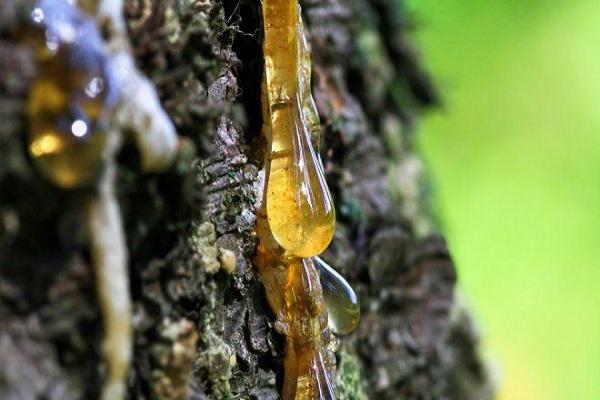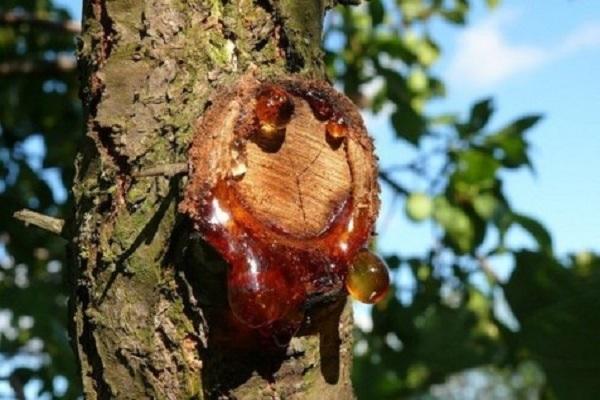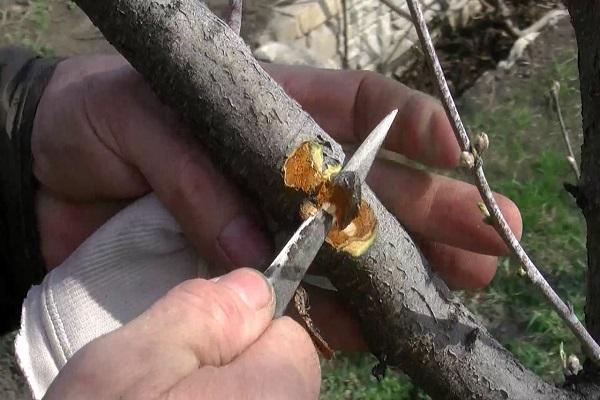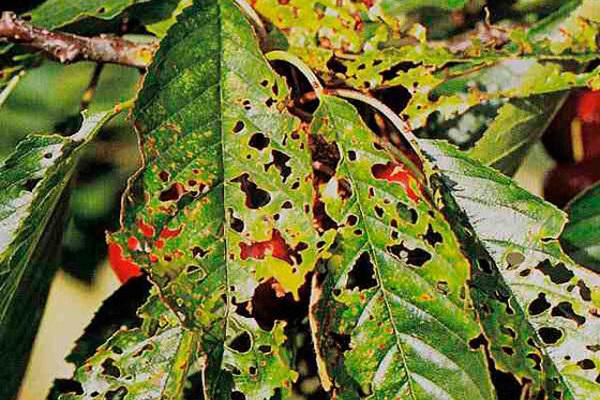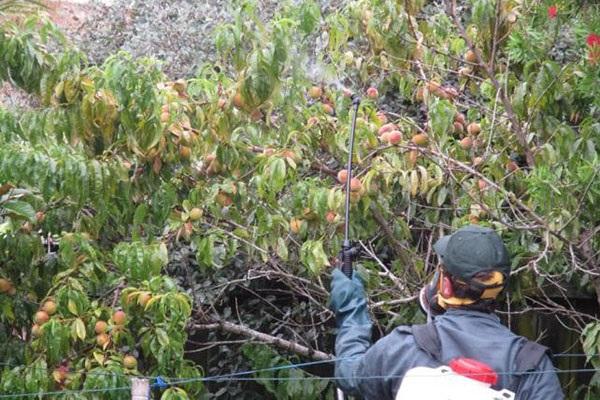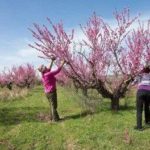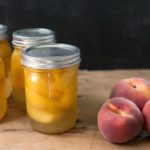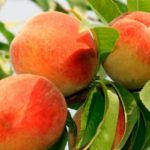As a child, everyone tried resin on fruit trees and had no idea that it was a disease and not a delicacy. The reason for the appearance of glue is a violation of the integrity of the bark. Chronic leakage of the adhesive mass weakens the tree and leads to death. At the first symptoms, it is necessary to treat gum disease in garden peach, cherry, and plum. And in the future – to prevent the disease.
What is gommosis?
The release of a sticky mass on tree trunks is a disease called gommosis (gum).Mostly stone fruit plants suffer: peach, cherry, plum.
Trees react to various types of damage. The process occurs in young wood. Cambium does not form new bark elements outside or inside. The biological functioning of cells is disrupted. As a result, new cells appear, inside which starch accumulates.
Over time, the amount of intercellular substance increases, and the shell cannot withstand it and cracks. Then the cell membrane and starch dissolve. As a result of decomposition, a liquid, sweetish mass flows onto the surface of the trunk and hardens, forming gum.
Why does glue come out on a peach?
The reasons for the appearance of a sticky mass on a peach may be:
- fungal or bacterial infection;
- agrotechnical violations;
- climatic conditions;
- pest damage.
Chronic release of glue weakens the vitality of the plant. Therefore, gum therapy needs treatment.
Fungal or bacterial infection
Mechanical damage to the bark of peaches causes gum to leak. If bacterial or fungal organisms get into the wound, they only worsen the disease. The causative agents may be:
- stone fruit cancer;
- bacterial burn;
- Clusterosporiosis;
- moniliosis
Signs of gommosis are detected in all parts of the peach: on the fruits, trunk, branches.
Violation of agricultural cultivation technology
Violation of agricultural technology can provoke the disease:
- incorrectly selected soil. The disease develops in acidic soil. The favorable environment is heavy, floating clay soils;
- oversaturation with fertilizers, especially nitrogen elements;
- excessive watering;
- high humidity;
- excessive pruning;
- incompatibility of the scion with the rootstock.
The bark cracks and a sticky mass is released.
Climatic conditions
Resin release is aggravated under unfavorable climatic conditions:
- excessive moisture is accompanied by cold;
- in autumn, heavy rains are replaced by cold weather;
- sunburn;
- freezing of peach in winter;
- frost breakers;
In the spring, at the first symptoms, treatment begins.
Pest infestation
Pests destroy the bark layer, thereby causing disease.
Wrinkled sapwood. Beetles and larvae cause damage to the tree. Insects make holes in the bark up to 2 millimeters, lay eggs, and then die, covering the puncture with their bodies. The larvae overwinter in passages under the disturbed surface layer. In the spring they open the holes and go outside. Over time, resin appears in the wounds and gum formation begins.
Rodents cause considerable damage to trees by destroying the bark. As a result, they provoke a disease - gommosis.
Plum moth. The caterpillars eat the flesh of the peaches, filling the voids with excrement. Hardened gum appears in the holes.
How to treat gum on peach
When a thick mass appears, special attention is paid to wounds and cracks. The glue is thoroughly cleaned down to living tissue. Make a working solution: add 100 grams of copper sulfate to 10 liters of liquid. Treat wounds and cracks. As soon as the trunk dries, it is whitened with the following composition: copper sulfate, clay, lime. Next, the cause of the disease is determined and eliminated.
Wounds are also treated with garden varnish. It prevents rotting and drying out. Large wounds are covered with clay and mullein. If the provocateur of the disease is fungal diseases, use Horus, a systemic drug. In the fight against plum moth, Fitoferm is used.
How to prevent gum development
Gommosis can be avoided.To achieve this, a number of comprehensive measures are carried out:
- Winter-hardy varieties of peaches are used in cold regions.
- Select the correct soil and acidity level.
- Before wintering, the soil is insulated with spruce branches, the trunk is wrapped in paper and planks. Fencing and insulation will protect against rodent attacks and temperature changes in the spring.
- Take comprehensive measures against diseases and pests.
- Trees are whitewashed in a timely manner to prevent burns.
- Feeding peaches should be balanced.
- During pruning, the tools are disinfected and the cuts are treated with garden varnish.
- To prevent fungal diseases, rub the trunk with sorrel leaves. After drying, treat with garden varnish. The procedure is repeated three times.
- In the spring, when the buds swell, the trees are sprayed with Bordeaux mixture or copper sulfate.
- Fufanon is used against beetles as soon as they begin to fly. Thoroughly wet the trunks and branches.
After such procedures, the tree will not be damaged.

